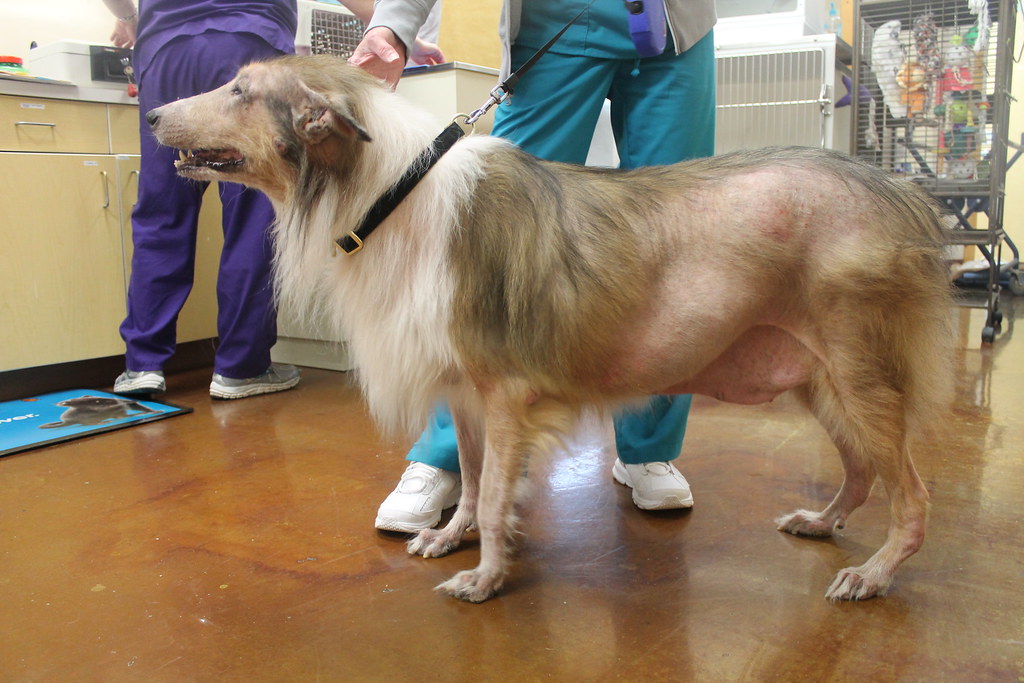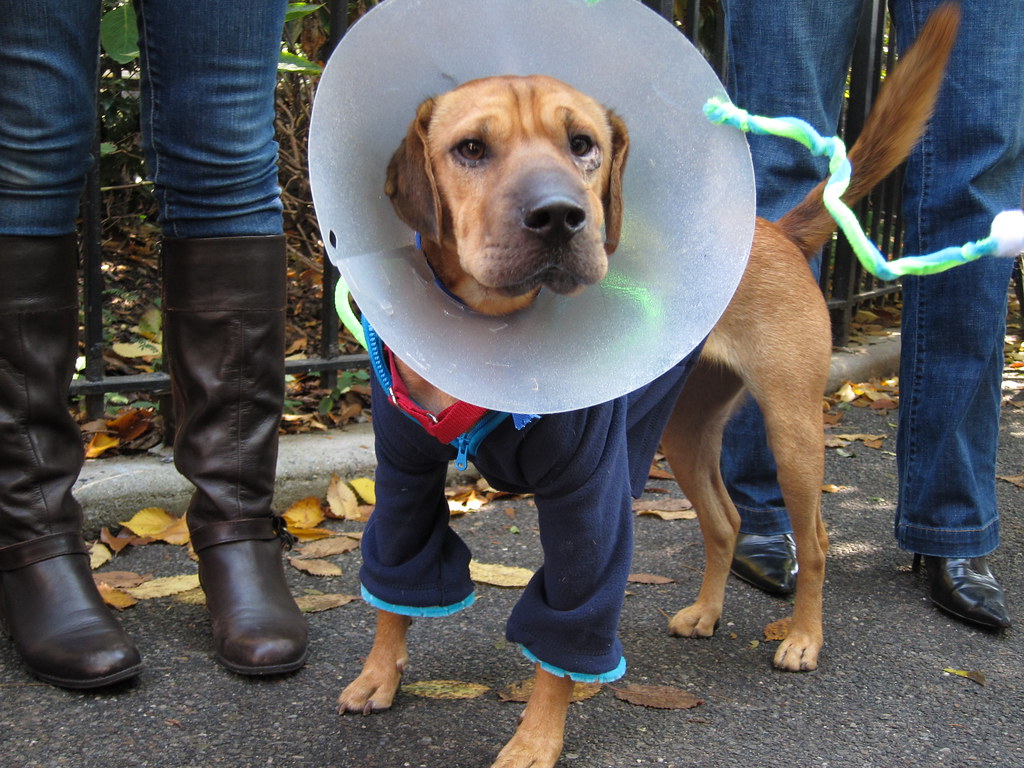
Hey there, fellow pet parents! As devoted companions to our furry, feathered, or scaled friends, we all want to ensure their health and happiness remain a top priority. It’s a unique bond we share, one where our pets communicate their needs not through words, but through an intricate dance of behavior and physical cues that we, as their guardians, must learn to understand.
The challenge, of course, is that pets are often experts at masking pain or discomfort. By the time symptoms become overtly noticeable, an underlying condition might already be quite advanced. This is why being vigilant, understanding their normal routines, and knowing what to look out for can literally be a lifesaver for your beloved companion.
This isn’t about overreacting, but about not reacting too late. We’re going to dive deep into 13 common signs that your pet might be silently telling you they need an immediate vet visit. Paying attention to these signals—some subtle, some screaming for help—can make all the difference in catching issues early and ensuring your pet receives the timely care they deserve.

1. **Sudden Changes in Eating or Drinking Habits**One of the earliest and most telling indicators that something might be amiss with your pet’s health is a sudden shift in their eating or drinking patterns. Pets are creatures of habit, and any drastic deviation from their normal consumption can be a red flag. It’s not just about a skipped meal; it’s about persistent changes that don’t resolve quickly.
If your pet skips meals for more than a day or two, it could indicate dental pain, gastrointestinal issues, or kidney problems. A decreased appetite might also signal more serious conditions like liver disease. On the other hand, a sudden, insatiable hunger or overeating can point to issues like diabetes, hormonal imbalances, or even stress.
Similarly, monitoring your pet’s water consumption is crucial. Excessive thirst, where your pet is drinking too much, might point to conditions such as diabetes, kidney disease, or hormonal issues. Conversely, a sudden drop in water intake can quickly lead to dehydration, which may accompany other illnesses and compound their severity. Both extremes warrant careful attention.
It’s essential to observe not just *if* they’re eating or drinking, but *how* much and *how often*. Are they refusing a favorite treat? Are they constantly hovering around the water bowl? These subtle cues, when consistent, are your pet’s way of saying, ‘Hey, something isn’t quite right here.’
Read more about: Your Ultimate DIY Guide: 14 Simple Steps to Master Car Brake Pad Thickness Checks for Safer Drives

2. **Persistent Vomiting or Diarrhea**While the occasional stomach upset might not be a major concern for any pet owner, persistent vomiting or diarrhea is a different story entirely. These symptoms, if they last for more than a day or two, can signal serious underlying issues that demand immediate veterinary attention. It’s a common issue, but persistence is key.
When you see these symptoms, it’s vital to look out for additional red flags. Is there blood present? Does your pet seem unusually lethargic? Are they refusing to eat anything at all? These accompanying signs indicate a higher level of distress and could point to more severe conditions like infections, toxins, or even gastrointestinal obstructions. Don’t wait.
Persistent vomiting can quickly lead to dehydration, which itself can become a serious problem, especially in smaller or older pets. If your pet vomits repeatedly over 24 hours, or experiences severe diarrhea for the same duration, it’s crucial to seek veterinary advice without delay. Timely diagnosis can prevent further complications and help identify the root cause.
Remember, your pet relies on you to interpret these often-distressing signs. What might seem like a simple ‘tummy ache’ could be a much more significant health crisis brewing beneath the surface. Trust your instincts; if you’re worried about the frequency or severity, it’s always best to consult a professional.
Read more about: Beyond the Cramps: 12 Essential Colon Cancer Warning Signs, Including Those Affecting Your Appetite, You Should Never Ignore

3. **Unexplained Weight Loss or Gain**Drastic weight changes in pets are rarely normal and should always be addressed promptly by a veterinarian. Just like in humans, sudden or unexplained fluctuations in your pet’s weight can be a significant indicator of various underlying health problems, even if their diet and activity levels haven’t changed.
Rapid weight loss, especially when your pet is still eating regularly, can be particularly concerning. This could indicate the presence of parasites, cancer, diabetes, or other chronic conditions that are silently affecting their metabolism and nutrient absorption. Careful monitoring of their eating habits and any other accompanying signs like vomiting or diarrhea is extremely important.
Conversely, unexpected weight gain without a corresponding increase in food intake or decrease in exercise can also be a cause for alarm. This might be linked to hormonal imbalances, such as thyroid problems like hypothyroidism, or Cushing’s disease. These conditions often require specific medical intervention to manage.
Monitoring your pet’s weight regularly, perhaps during your routine cuddles or grooming sessions, and noting any sudden or unexplained changes, can help you address potential health issues early. Don’t dismiss a changing waistline as just ‘getting older’—it could be a crucial signal from their body.
Read more about: Beyond Fatigue: Crucial Thyroid Disorder Symptoms You Should Never Overlook, Including Early Signs That Begin in Your Hair and Skin

4. **Difficulty Breathing or Coughing**If your pet is struggling to breathe or experiencing persistent coughing, this is a symptom that absolutely requires immediate veterinary care. Respiratory issues are not to be taken lightly, as they can quickly escalate and become life-threatening. Observing any changes in their breathing patterns or the presence of a cough should prompt quick action.
Watch carefully for signs such as wheezing, labored breathing—where they seem to be working hard to inhale or exhale—or an excessive, persistent cough. These can be indicators of a range of serious conditions, from severe allergies and asthma to more critical issues like heart disease, pneumonia, or even kennel cough in dogs. Each breath matters.
Unusual panting, especially when your pet is at rest or not exercising, can also be a significant warning sign. While panting is normal for cooling down, persistent panting without obvious cause or labored breathing suggests a respiratory problem or heart condition that needs immediate assessment. Time is truly of the essence in these scenarios.
Don’t hesitate to contact your vet if these symptoms persist or worsen, or if they are accompanied by other signs like lethargy or nasal discharge. Addressing respiratory problems early can prevent more severe health complications and ensure your pet’s comfort and ability to get enough oxygen.
Read more about: Beyond the Cough: 14 Critical Lung Infection Warning Signs You Should Never Ignore, Including Unexpected Clues on Your Fingernails

5. **Severe Lethargy or Weakness**When your usually energetic and playful pet suddenly becomes unusually tired, withdrawn, or uninterested in activities they typically enjoy, it’s a significant red flag. This isn’t just a lazy day; severe lethargy or weakness can be a profound sign that something is seriously wrong with your pet’s health, signaling a cry for help.
This change in energy levels might manifest as sleeping more than usual, a lack of enthusiasm during walks, or even a complete disinterest in playtime or interacting with family members. While it can be subtle, a noticeable drop in their normal activity level, especially if it persists beyond a day, should never be ignored.
Lethargy can be a symptom of a wide array of underlying health problems. These can include infections, anemia, metabolic disorders, chronic illnesses, or even more serious conditions that are sapping your pet’s strength. Early intervention can be crucial for recovery, as this symptom is often a general indicator of systemic distress.
If your pet’s energy levels don’t bounce back quickly, or if the lethargy is accompanied by other symptoms, it’s essential to have your pet evaluated by a veterinarian. They can determine the cause and provide appropriate treatment to help your furry friend regain their vitality. Trust your gut feeling if your pet just ‘seems off.’
Read more about: Homeowners Beware: Unmasking the Hidden Dangers of 15 Common Houseplants Highly Toxic to Pets

6. **Visible Pain or Discomfort**Pets, by nature, are incredibly stoic and often hide their pain very well. However, they will often display physical signs of discomfort that, if you’re observant, can signal an urgent need for veterinary attention. If you notice your pet is limping, struggling to move, or showing clear signs of pain when touched, it’s essential to seek help.
Limping can result from various reasons, including acute injuries like sprains or fractures, chronic conditions like arthritis, or ligament tears. Observe if your pet avoids putting weight on a particular limb, has difficulty climbing stairs, shows reluctance to move, or winces when a certain area is palpated. Swelling around joints is also a significant red flag.
Beyond mobility issues, watch for other signs of discomfort. This could include sudden aggression or snapping when approached, excessive licking of a particular body part, a hunched posture, or vocalizing—such as whining or yelping—when they move or are handled. These are their ways of communicating that they are hurting.
Pain can stem from a multitude of issues, both external and internal. Untreated injuries can lead to more severe long-term problems, while internal pain could indicate organ issues or other serious conditions. A prompt visit to the vet can help determine the cause, alleviate their suffering through medication, and ensure they receive the best possible care for their specific situation.
Read more about: Beyond Fatigue: Crucial Thyroid Disorder Symptoms You Should Never Overlook, Including Early Signs That Begin in Your Hair and Skin
7. **Changes in Behavior or Mood**Any sudden or drastic shifts in your pet’s usual behavior or mood can be a powerful indicator of underlying discomfort or health problems. Your pet’s personality is as unique as they are, and changes from their baseline often signal that something internal or external is causing them distress. It’s crucial to tune into these often-subtle shifts.
If your usually friendly and outgoing pet suddenly becomes aggressive, withdrawn, or excessively anxious, it might be a response to pain, illness, or even fear. Unusual aggression towards familiar people or animals, or a normally independent cat suddenly becoming overly clingy, are significant signals that warrant investigation.
Conversely, if your pet becomes overly clingy, seeking constant reassurance, or starts hiding and isolating themselves, it could indicate emotional or physical distress. They might be trying to tell you they don’t feel well, or they’re experiencing pain they can’t otherwise express. These behavioral changes aren’t just ‘quirks’—they can signify serious issues.
Behavioral changes can stem from a wide range of physical or psychological issues, including pain, stress, anxiety, or even neurological conditions. Consulting with a veterinarian is essential to help determine the root cause, whether it’s a medical condition requiring treatment or a behavioral issue that needs expert guidance to manage effectively.
Beyond the obvious symptoms we’ve already discussed, our pets have even more ways of signaling distress. It’s a silent language we must constantly learn and adapt to, watching for the nuanced cues that hint at deeper issues. The goal isn’t just to react, but to anticipate, ensuring our beloved companions receive the swift, informed care they truly deserve. This next set of indicators delves into areas like skin health, elimination patterns, and sensory changes, offering practical insights that can make all the difference.
Read more about: 13 Powerful Ways to Declutter Your Mind and Quiet Anxiety in Just 15 Minutes

8. **Skin Problems and Hair Loss**Your pet’s skin and coat are far more than just pretty coverings; they’re vital indicators of their overall well-being. Just like a health report card, changes in their skin or fur can often be the first visible signs that something is amiss internally or externally. It’s crucial to pay close attention during your regular grooming or petting sessions for anything out of the ordinary, as these could be your pet’s way of asking for help.
Keep a vigilant eye out for various skin irritations, such as unexplained redness, the emergence of bumps, or any excessive scratching that seems out of character or persistent. These seemingly minor issues can quickly escalate into more significant problems like dermatitis, which is a generalized skin inflammation, or allergic reactions to their food or environment. Your pet might be experiencing constant discomfort, leading to relentless itching and potential secondary infections if left unaddressed.
Beyond irritation, unexplained hair loss or the appearance of bald spots can also be significant red flags. While a bit of shedding is perfectly normal, patchy fur or thinning hair can point to a spectrum of underlying health issues. These might range from stress and anxiety, which can cause them to over-groom, to more concerning conditions like fungal infections, parasitic infestations, or even hormonal imbalances that affect their coat health. Early intervention is key to identifying the precise cause and implementing effective treatment.
It’s not enough to simply notice these changes; understanding their potential implications is what empowers you as a pet parent. Skin issues can quickly become chronic and severely impact your pet’s quality of life if not diagnosed and treated promptly. A visit to the vet can clarify the situation, bringing relief to your pet and peace of mind to you. Don’t let a “bad hair day” turn into a serious health crisis for your furry friend.
Read more about: Beyond Fatigue: Crucial Thyroid Disorder Symptoms You Should Never Overlook, Including Early Signs That Begin in Your Hair and Skin

9. **Unusual Urination or Defecation Issues**Monitoring your pet’s bathroom habits might not be the most glamorous part of pet ownership, but it’s absolutely vital for their health. Any sudden or drastic changes in their urination or defecation patterns are not merely inconvenient; they can be critical indicators of significant underlying health concerns that demand your immediate attention. These are often direct lines of communication from their internal systems.
When it comes to urination, keep a close watch for signs like straining to urinate, an unusual increase in frequency (even if only small amounts are produced), or, most alarmingly, the presence of blood in their urine. These symptoms can be tell-tale signs of urinary tract infections (UTIs), potentially painful bladder stones, or more severe kidney problems that can quickly compromise their overall health. Timely diagnosis is crucial to prevent these conditions from worsening and causing greater distress.
Similarly, changes in defecation patterns should never be overlooked. While occasional soft stools or a bit of constipation might happen, persistent diarrhea or chronic constipation are serious causes for concern. These can indicate a range of gastrointestinal issues, dietary problems, parasitic infections, or even more complex internal disorders. The consistency, color, and frequency of their bowel movements can provide your veterinarian with invaluable clues about their digestive health.
It’s important to remember that prolonged issues with elimination can quickly lead to dehydration, electrolyte imbalances, and severe discomfort for your pet. If you observe any of these unusual urination or defecation issues, especially if they persist for more than a day or two, it’s imperative to have your pet examined by a veterinarian without delay. Early diagnosis and treatment can prevent significant pain and more complicated medical interventions down the line.

10. **Persistent Sneezing with Nasal Discharge**While an occasional sneeze might just be your pet reacting to a bit of dust or an tickle, persistent sneezing, especially when accompanied by nasal discharge, is a different story altogether. This isn’t just a quirky habit; it’s a symptom that can indicate a range of respiratory issues or allergies that require professional veterinary assessment. Your pet’s nose knows when something’s not right.
If you notice your pet consistently sneezing, particularly if there’s any discharge coming from their nostrils, it’s time to pay closer attention. The nature of the discharge – whether it’s clear, cloudy, yellow, or even bloody – can provide important diagnostic clues. Clear discharge might point to allergies or a mild irritation, while thicker, colored discharge often suggests an infection that needs immediate attention.
These persistent symptoms can be indicators of various respiratory conditions, including upper respiratory infections (like kennel cough in dogs or cat flu), sinus infections, or even the presence of a foreign body lodged in their nasal passages. Environmental or seasonal allergies are also common culprits, causing discomfort and persistent irritation. What seems like a minor annoyance can quickly impact their ability to breathe comfortably and enjoy their daily activities.
Don’t dismiss persistent sneezing and nasal discharge as just a simple cold that will pass. Ignoring these signs can lead to more severe health complications, prolonged discomfort, and even pneumonia in some cases. Consulting a vet can help determine the underlying cause, leading to appropriate treatment that alleviates your pet’s symptoms and ensures their respiratory health.

11. **Persistent Bad Breath or Oral Issues**We all know that “dog breath” or “cat breath” isn’t exactly fresh, but there’s a significant difference between normal pet odors and truly persistent, foul bad breath. If your pet’s breath is overwhelmingly unpleasant, or if you notice other concerning signs in their mouth, it’s far more than just a nuisance; it’s a red flag pointing to potential dental disease or other serious underlying health issues that shouldn’t be ignored.
Take a moment to carefully examine your pet’s mouth – if they’ll let you! Look for tell-tale signs such as heavy tartar buildup on their teeth, which appears as a yellowish or brownish crust. Also, check their gums for any redness, swelling, or bleeding, which are classic indicators of gingivitis or more advanced periodontal disease. Loose or missing teeth, or reluctance to eat hard foods, are additional warning signs that demand attention.
Dental disease in pets is incredibly common, and if left untreated, it can lead to severe pain, difficulty eating, and even systemic infections as bacteria from the mouth enter the bloodstream. These infections can impact vital organs like the heart, kidneys, and liver, causing much more serious health complications than just a smelly breath. It’s a silent threat that can significantly diminish your pet’s quality of life.
That’s why a prompt vet visit for persistent bad breath or any visible oral issues is absolutely crucial. A veterinarian can assess the severity of the dental problems, perform necessary cleanings, and address any extractions or treatments needed. Investing in your pet’s oral hygiene is not just about fresh breath; it’s about safeguarding their overall health and preventing a cascade of related health problems. Don’t let dental pain be your pet’s hidden suffering.
Read more about: Beyond Warp Core Breaches: 15 Sci-Fi Tropes and Concepts That Are Seriously Struggling to Make Sense Anymore

12. **Swollen Abdomen**Discovering a swollen abdomen on your pet can be an incredibly alarming moment for any owner, and rightly so. This isn’t a symptom to take lightly; it’s a sign that demands immediate veterinary attention, as it can indicate a range of urgent and potentially life-threatening conditions. Your pet’s belly should generally be soft and not distended, so any noticeable swelling is a serious concern.
Keep a keen eye out for any associated symptoms that might accompany a swollen abdomen. Is your pet showing signs of discomfort, perhaps pacing restlessly, or adopting unusual postures? Are they exhibiting difficulty breathing, struggling to lie down comfortably, or panting excessively even when at rest? These additional cues can provide crucial information to your veterinarian about the severity and nature of the underlying problem.
The causes of a swollen abdomen are diverse and serious. It could be indicative of conditions like bloating, especially in larger, deep-chested dog breeds, which is a medical emergency requiring immediate surgery. Other possibilities include the presence of tumors or growths, internal bleeding, a ruptured organ, or even fluid accumulation due to heart or liver disease. Each of these scenarios poses a significant threat to your pet’s life and requires swift intervention.
Due to the critical nature of a swollen abdomen, prompt veterinary attention isn’t just recommended—it’s absolutely crucial. Delaying action can drastically worsen the prognosis, as many of the potential causes are rapidly progressive and life-threatening. If you observe your pet with a distended belly, particularly with accompanying distress, do not wait; get them to an emergency vet clinic immediately. Early intervention in these cases can truly be life-saving.
Read more about: Beyond the Cramps: 12 Essential Colon Cancer Warning Signs, Including Those Affecting Your Appetite, You Should Never Ignore

13. **Eye or Ear Issues**Our pets rely heavily on their senses, and problems with their eyes or ears can significantly impact their comfort, well-being, and ability to navigate their world. These are delicate areas, and even seemingly minor issues can quickly escalate into painful infections or chronic conditions if left unattended. Observing these crucial sensory organs regularly is a cornerstone of proactive pet care.
When inspecting your pet’s ears, look for several key indicators of distress. Is there any noticeable redness or swelling in the ear canal? Do you see an unusual discharge, which could range from waxy to pus-like? Is there a strong, foul odor emanating from the ears? And most visibly, is your pet constantly scratching, rubbing, or shaking their head excessively? These are classic signs of ear infections, mites, or foreign objects lodged within the ear.
For their eyes, be vigilant for symptoms such as redness in the whites of the eyes or around the eyelids, any swelling of the eyelids themselves, or an unusual discharge. This discharge could be watery, thick, green, or yellow. You might also notice your pet squinting, tearing excessively, or showing changes in the color of their eyes. These can indicate infections, allergies, corneal abrasions, or more serious conditions like glaucoma or cataracts.
Both eye and ear issues can be incredibly painful and uncomfortable for your pet, leading to further complications if not addressed promptly. Untreated infections can spread, cause permanent damage to hearing or vision, and significantly reduce your pet’s quality of life. An urgent visit to the vet can lead to an accurate diagnosis and a targeted treatment plan, ensuring your pet’s precious senses remain clear and healthy.
Read more about: Beyond the Mortgage: Uncovering the 14 Hidden Costs of Homeownership You Need to Know
Understanding these vital warning signs is not just about being a good pet owner; it’s about becoming an expert interpreter of your pet’s unspoken language. Each subtle change, each persistent symptom, is a piece of a puzzle, and it’s up to us, their devoted guardians, to put those pieces together and seek the professional help they need. Our pets offer us unconditional love, and in return, they rely on us to be their unwavering advocates for health and happiness. So, keep observing, keep learning, and when in doubt, never hesitate to reach out to your trusted veterinarian. Your swift action can be the lifeline your beloved companion needs for a long, vibrant life by your side.




:max_bytes(150000):strip_icc():focal(1106x91:1108x93)/Jennifer-Garner-is-seen-in-Los-Angeles-121724-d8a3ae95996e4cbda4c51aac69995776.jpg)